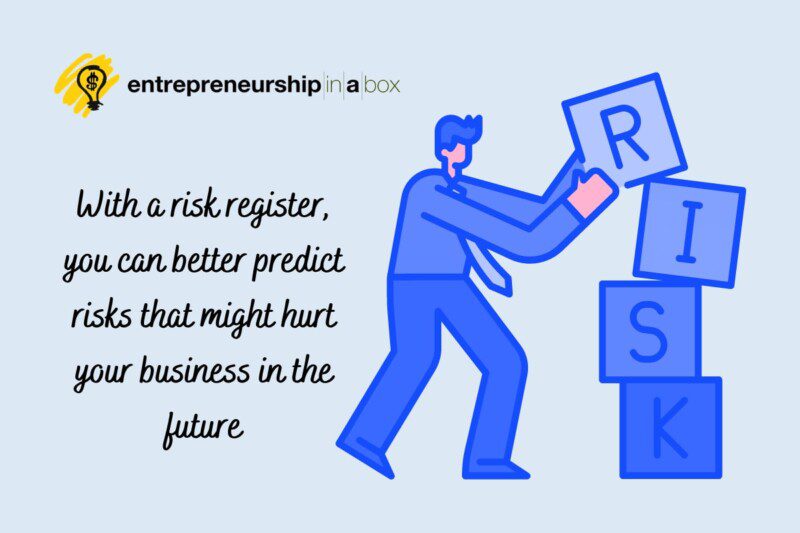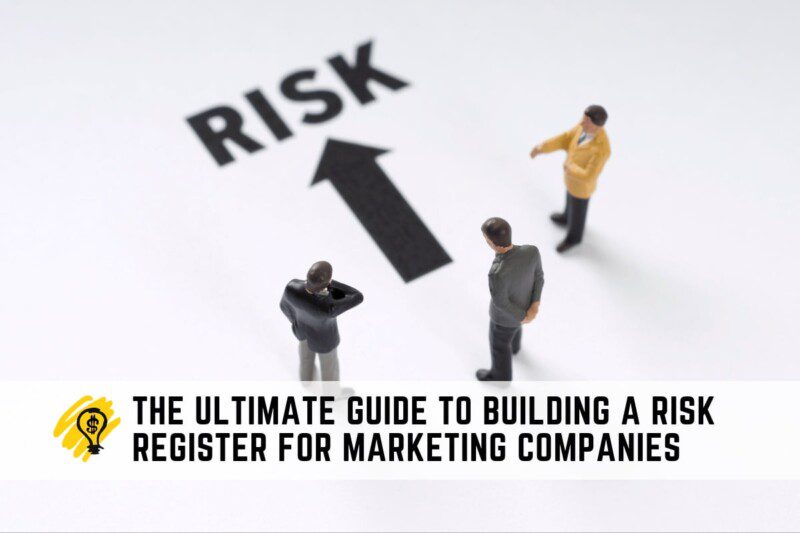The recent explosion in technological advancements has resulted in the digitization of most functions, including marketing. Today, most marketing companies leverage digital marketing to promote goods and services, especially since most consumers prefer to purchase online. And while digital marketing has its benefits, it also presents its own set of challenges. For instance, modern marketing companies face substantial cyber threat risks, operational risks, and strategic risks, among other risks. To mitigate these risks, marketing companies need to build robust risk management tools and implement a sound risk management program.
That said, the identification, analysis, prioritization, and mitigation of risks is the building block of every successful risk management plan. For most marketing companies, this process is conducted repeatedly –and each time, it generates valuable data about the potential threats that may impact business operations, the risks those threats pose, and the necessary steps that should be taken to mitigate them.
But the burning question is, what do you do with all that risk data, and where and how should it be stored; so that your company is better prepared to face more risks in the future?
Enter the risk register—this document ensures that you’re adequately prepared to respond quickly to risks before a small issue that could have been easily averted turns into a big problem.
This post will walk you through how to build a risk register for marketing companies.
What Is a Risk Register?
Also known as a risk log, a risk register is a risk management tool used to identify and track potential risks across an organization. It also includes information pertaining to risk priority and the likelihood of a given risk happening. Building and maintaining a risk register is a crucial part of the risk management process, and like most parts of risk management, it is an ongoing process.
A risk register should not only include information about the threats that pose a risk to your company, their nature, and their level of impact but also provide effective ways of mitigating these threats. In short, a risk register should tell you everything you need to know about the identified risks. This way, suppose a risk transforms into a bigger threat; your team will be adequately prepared with the right tools to solve the issues.
The Benefits of Building a Risk Register
While marketing companies face a lot of risks, including employer turnover, the entrance of new competitors, and reputational risks, cyber threat is arguably the most concerning risk for these organizations. And considering that the average cost of a data breach is around $4.35 million, it has never been more important for marketing companies to build robust tools such as a risk register to safeguard against cyber threats and other types of risks.
One of the obvious benefits of building a risk register is that it will enable you to manage your risks more strategically. A risk register allows your organization to focus its resources on the areas with the highest risk, thereby helping ensure that the risks don’t occur, and even if they do, they are mitigated in a timely manner. It can also enable risk managers to convince organizational decision-makers to invest more in preventive security measures to help avert future risks.
Another benefit of building a risk register is that it will help you identify your organization’s risk patterns. Entering information about the risks your company faces for each new marketing campaign allows you to accumulate valuable data about the threats that have harmed your business in the past. With this information, you can better predict risks that might hurt your business in the future. The information in your risk register will also allow you to monitor how well your team members are responding to various risks and whether you need to adjust your risk mitigation plan to increase its effectiveness.
The Possible Consequences of Not Having a Risk Register
You don’t need to be a rocket scientist to know that today’s marketing world is chaotic. If there was ever a time for marketing companies to be reactive rather than proactive, it is now. One way of doing that is to build a risk register. Without this document, a company could face several consequences, including:
1. Communication Problems
Communication problems can arise regardless of the size of your campaign or team. These problems may include missed deadlines, project inconsistencies, and the inability to report potential risks on time. A risk register can not only help identify where communication issues may arise but also help implement work management solutions to streamline organizational communication. Additionally, a risk register can help you develop a sound communication plan, which can be handy in preventing risks from surfacing in the first place.
2. Theft of Materials
While uncommon, marketing companies with a substantial inventory of products run the risk of reporting errors and theft. Failing to build a risk register and a risk management plan can signal a lax attitude. Unscrupulous employees can take advantage of this lax attitude to steal from your company. In a nutshell, not having a risk register can leave your company open to theft, which could result in uncertainty and lost revenue.
Theft is a high-priority risk that a risk register can help you handle as effectively as possible.
3. Unplanned Work
We have all found ourselves in a situation where a campaign or project goes over scope. This is a common risk that can be easily mitigated if tracked properly using a risk register. Without a risk register, you could experience the following:
- Employee burnout: When you overschedule your team members with unplanned work, you not only create tension but also cause burnout.
- Missed deliverables: If you schedule your work without a clear plan, you run the risk of missing deadlines altogether.
A risk register can enable you to catch unplanned work early, so you can properly delegate it.
4. Data Insecurity
Today’s marketing is data-driven. This means that marketers use data to improve their SEO strategy, enhance their social media marketing, create digital content that resonates with their target audience, and more.
With that in mind, it’s extremely important for companies to track and mitigate potential risks to their data. Without a risk register, it can be difficult to track these risks. Consequently, this could result in data theft, revenue loss, and potentially legal action.

Where to Start With a Risk Register for Marketing Companies
While there are numerous risk register templates online, regardless of the structure you opt for, the primary objective of your risk register should be to log information about potential risks. So, strive to only select the fields that you feel are essential to communicating the key information about potential risks to your company.
Here are the basic steps you should take when building a risk register for your marketing company:
Identify Risks
Risk identification is perhaps the most crucial step when creating a risk register since it will inform the other steps in the process. There are numerous methods for identifying risks, but the most recommended ones are risk assessment or risk analysis. These risk identification methods will help you create a list of potential risks that may affect your business. The list you create will help inform the decisions you make about future risks.
Remember to include all stakeholders in the risk identification and ensure you capture their concerns. Generally, you should use this stage to exhaust all categories of risks that may impact your company—from cyberattacks to market resources to the weather.
Note: Your risk identification field should include the risk name, the date it was identified, and the subtitle (if necessary).
Describe Risks
Upon identifying the potential risks that your company could encounter, you need to provide a brief description of each of them. How you describe each of the risks should make it easy for everyone in your organization to understand the key details of the risks. Try to be thorough with your risk description while at the same time limiting it only to essentials such that it isn’t overwhelming. A vague risk description will make it challenging for your team members to determine whether or not a risk is a real issue. For example, “a data breach” may seem overly vague; “potential ransomware attack targeting New York marketing companies could bring operations to a standstill” is clear and compelling.
As a rule of thumb, your risk description should be brief yet informative enough so that someone who isn’t familiar with the inner workings of your company can understand how a given risk can harm your business.
Estimate Risk Likelihood and Impact
Estimate how each risk might affect your company so you can develop a strategy for mitigating them. For example, if you hear rumors of your competitor launching a new campaign, identify the actual impact that might have on your current campaigns. You can either use quantitative or qualitative analysis to measure the impact of the risks.
Besides estimating the impact of your risks, you’ll also need to assess the likelihood of a given risk occurring. How you execute this step will depend largely on the risk management techniques you use throughout your organization.
Develop a Risk Response Plan
Next, you need to create a risk response plan that defines how you’ll respond to each of the risks. This step will require that your team puts in maximum effort. Ultimately, the risk response plan needs to be thorough without being overly excessive. Do your due diligence by conducting extensive research so that when a risk shows up, you can jump right into the action and follow the risk response plan accordingly to effectively mitigate the risk.
Basically, a risk response plan should include the following:
- A step-by-step guide on how to minimize the risk
- A brief description of the expected outcome
- How will the plan affect the impact
Preferably, your risk response plan should be able to substantially reduce the impact that a particular risk can have on your business.
Prioritize Risks
Different threats pose different levels of risk. For instance, cybersecurity threats may pose a higher risk than competitor threats. Prioritizing risks will enable you to understand the risk levels of each threat. You can then categorize the risks as either high, medium, or low. This way, you can filter your risk register and then prioritize risks.
Risks with the highest likelihood and potential for impact in multiple areas in your organization should be given the highest priority for mitigation.
Assign Risk Owners
Finally, you need to assign risk owners to each risk. Ensure that the people you assign the risk ownership role can mitigate the risks assigned to them. Also, ensure that the risk owners are aware that they are responsible for mitigating the risk in the event that the risk does occur.
Note: There’s one last column that you should include in your risk register. This column will serve as a place to record notes that don’t fit under the categories outlined above.
Conclusion
Identifying and mitigating risks can be a daunting task but a crucial one. Using the steps outlined above to create your risk register will help you build a solid foundation for an effective risk management plan. Once you’ve created your risk register, your organizational risks won’t seem as difficult to manage. Moreover, your team will have more time to focus on core business goals like driving traffic to customers’ websites and converting leads into buying customers.





